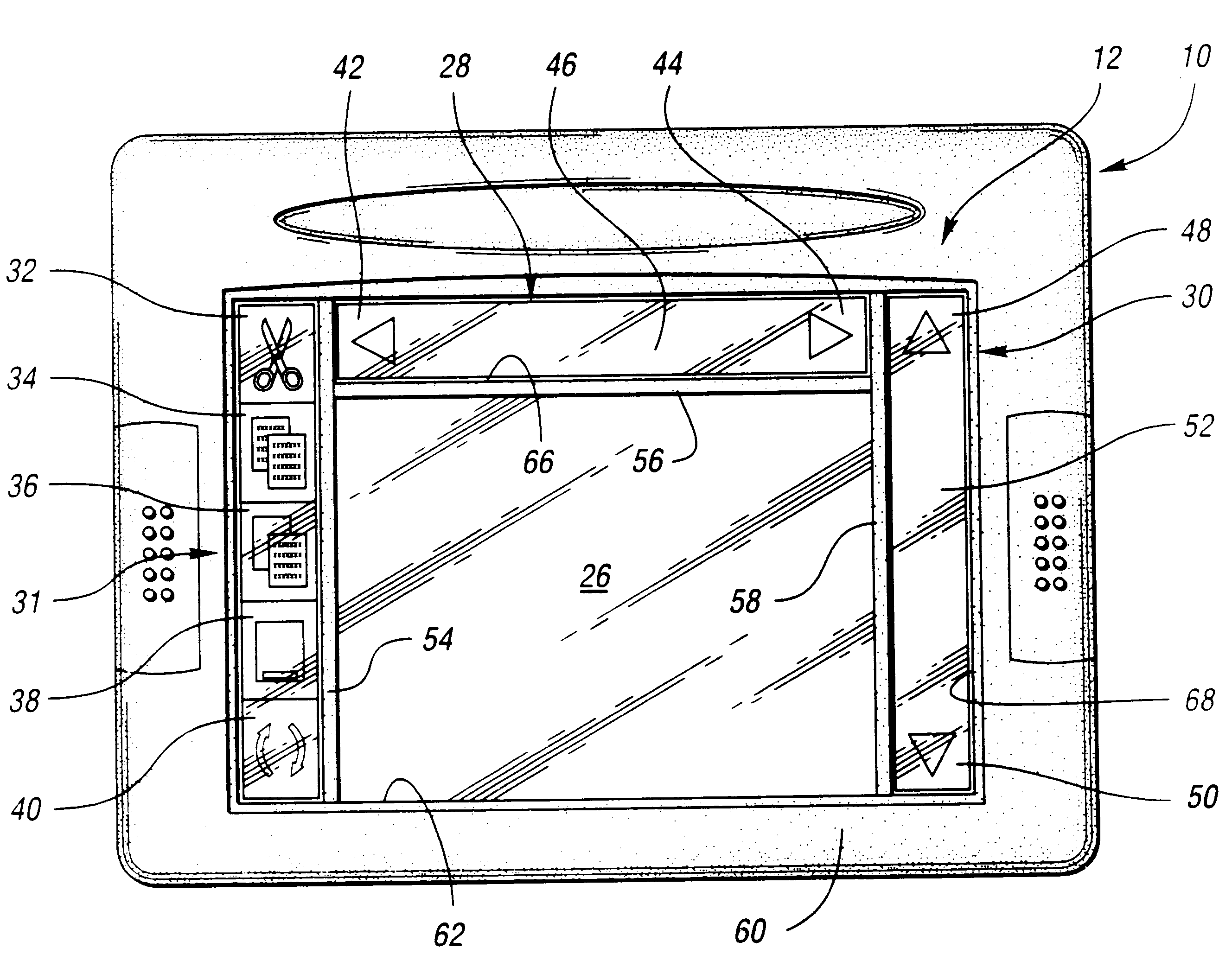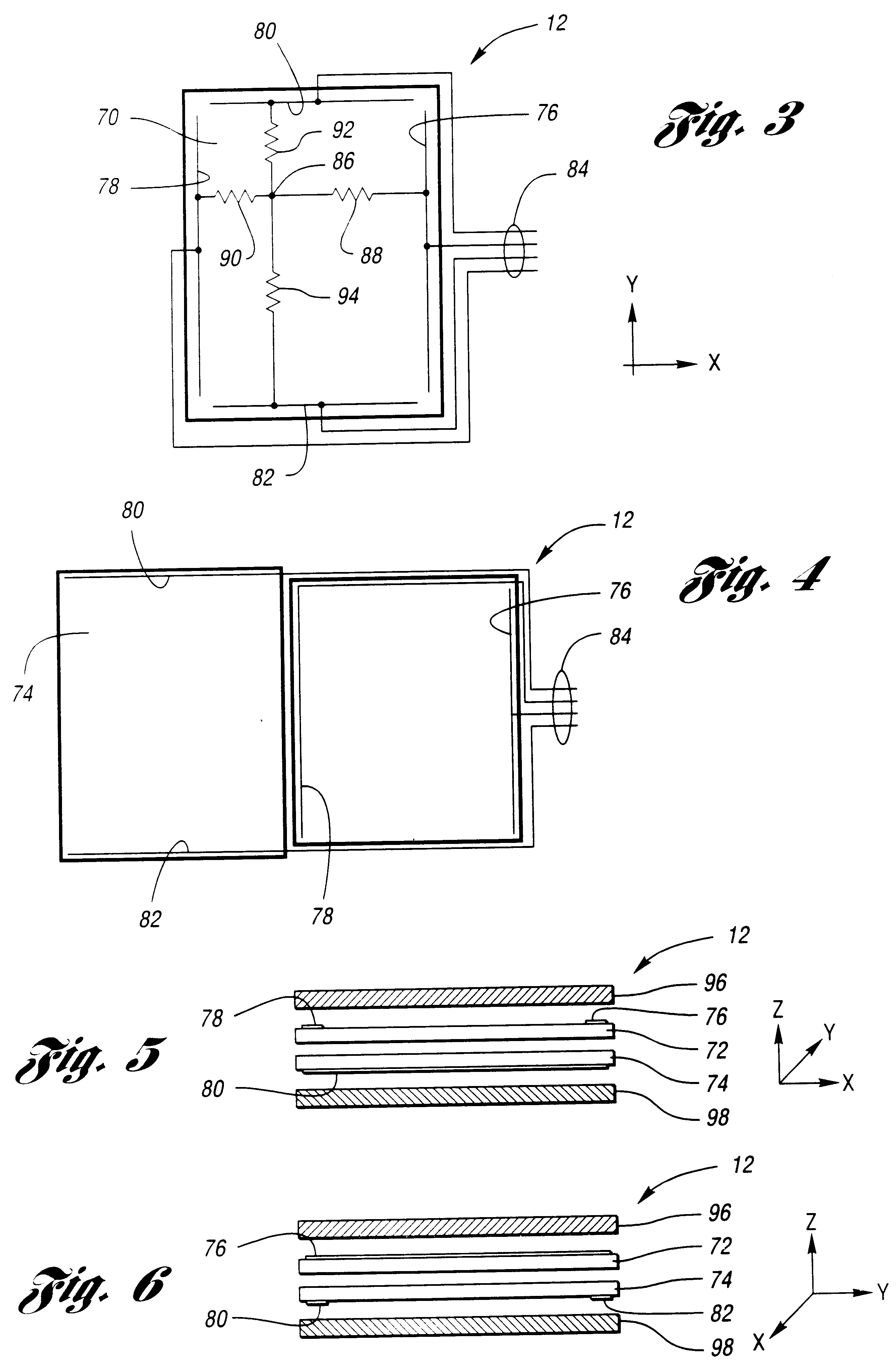The growing popularity of
laptop or notebook computers has created a significant problem for mouse type technologies which require a rolling surface.
Adding to the problem is that a mouse usually needs to be moved over long distances for reasonable resolution.
Finally, a mouse requires the user to lift a hand from the keyboard to make the cursor movement, thereby upsetting the prime purpose, which is usually
typing on the computer.
A track ball is large in size and does not fit well in a volume-sensitive application such as a
laptop computer.
Furthermore, a track ball is quite cumbersome because it requires practiced dexterity by the user as he or she interacts with the device.
Finally, a track ball is not durable and is easily subjected to
contamination from environmental factors such as
dirt,
grease, and the like.
The operation of capacitive touchpads is, therefore, easily compromised in moist or damp environments or by
perspiration of the user.
In short, with
moisture, capacitive touchpads become confused and lose their sensitivity.
Third, capacitive touchpads are prone to inadvertent cursor positioning because they sense an object as it gets near their surface.
This is problematic for the user because if the touchpad is installed near where the thumbs of the user naturally rest while
typing, an inadvertent
thumb simply moving over and above the touchpad can cause a false click and an unintended change in the cursor position.
This can result in repeated, accidental repositioning of the cursor and high levels of user
frustration.
The user may also experience fatigue and extreme discomfort from intentionally holding his thumbs or fingers away from the touchpad to avoid false clicks.
Fourth, the electronic circuitry of capacitive touchpads is complex and expensive.
The cost of this circuitry is significant and, in most cases, higher than the cost of the
microprocessor.
Obviously, for applications such as signature capture, pressure-controlled
scrolling and acceleration, 3D control, and the like, measuring the contact area to estimate the pressure is greatly inferior to measuring the actual pressure directly.
First, resistive touchpads can only measure ON / OFF resistance.
Thus, they cannot measure
gradation in pressure and cannot be used for such applications as signature capture, pressure-controlled
scrolling and acceleration, 3D control, and the like.
Second, the electronic circuitry of resistive touchpads is complex and expensive.
The cost of this circuitry is significant and, in most cases, higher than the cost of the
microprocessor.
Third, resistive touchpads require a relatively significant force to activate, roughly about twenty grams of force.
Unfortunately for the user, pushing his or her finger or a
stylus against a touchpad at twenty grams of force is fatiguing.
A primary
disadvantage of using prior art touchpads as input devices is that the touchpads do not incorporate actual
pressure data in their control signals.
When the cursor must be moved relatively long distances, necessitating multiple touchpad strokes, it is difficult to hold the drag button down to prevent release of the button and termination of the drag sequence while accomplishing the multiple strokes.
Even if the cursor can be dragged with a single touchpad
stroke, it is extremely difficult to maintain sufficient pressure on the touchpad to hold the button down while sliding a finger across the touchpad.
Consequently, in using touchpads for dragging, the drag sequences are frequently unintentionally terminated.
 Login to View More
Login to View More  Login to View More
Login to View More 


